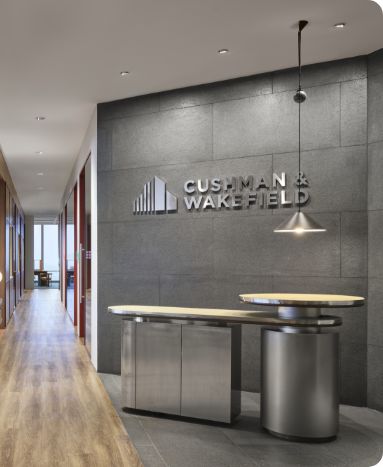Healthcare Maintenance Software
Optimize your medical facility’s maintenance with FieldCircle’s healthcare maintenance software. Designed specifically for hospitals and clinics, our healthcare CMMS simplifies tracking and upkeep of critical equipment such as ventilators, sterilizers, and diagnostic tools through real-time monitoring and automated maintenance tasks. Featuring preventive and predictive maintenance, work order automation, and actionable insights, our hospital maintenance software improves equipment reliability, enhances safety, and ensures uninterrupted healthcare operations. By extending equipment lifespan and reducing unexpected downtime, our hospital maintenance solution helps control costs and lowers repair expenses for healthcare facilities, enabling them to focus more on patient care and operational excellence.
How Our Healthcare Maintenance Software Works?
Explore how the key features work without signing up for a trial or demo.
FieldCircle’s Healthcare CMMS empowers hospitals, clinics, outpatient care centers, specialized care centers, and other healthcare organizations to streamline maintenance, uphold compliance, and improve medical equipment reliability. Tailored for healthcare, the software centralizes workflows, minimizes downtime, and ensures patient-critical assets are consistently operational, supporting uninterrupted patient care.
Work Order Creation and Assignment
FieldCircle’s CMMS simplifies the creation and assignment of work orders in hospitals and healthcare centers, where each request is logged, categorized, and prioritized. Managers can assign tasks based on technician skills and availability, especially vital for surgical and diagnostic equipment. The system tracks each work order from start to finish, maintaining readiness for high-priority medical assets.
Scheduling and Dispatching
Our CMMS automates scheduling and dispatching, reducing disruptions in patient care by prioritizing tasks according to urgency and workload. With automated reminders, preventive maintenance for essential devices like patient monitors, lab equipment, and x-ray machines is consistently timely, enhancing reliability and minimizing downtime across all facility types.
Asset Management
FieldCircle’s healthcare asset management software provides a centralized view of critical equipment, tracking lifecycle, maintenance history, and compliance status. By managing high-use devices like MRI machines, sterilization units, and infusion pumps, this software ensures adherence to safety standards, aids in budgeting, and supports continuous patient care across hospitals, clinics, and specialized facilities.
Technician Mobility
Technicians can access real-time updates, work orders, and asset data directly from their mobile devices. FieldCircle’s mobile-friendly CMMS allows field technicians to update task statuses, capture photos, and submit reports on critical medical devices, reducing response times and ensuring equipment like defibrillators is always ready.
Compliance Tracking and Reporting
FieldCircle’s CMMS tracks maintenance on critical assets like ventilators, ensuring healthcare facilities meet industry standards. Automated reports simplify audits and offer insights into equipment performance, helping facilities maintain regulatory adherence and meet documentation requirements essential for patient safety.
Integration with Existing Systems
Our CMMS integrates seamlessly with hospital management systems and healthcare software, eliminating data silos and improving asset visibility. This integration enables accurate, real-time decision-making in maintenance planning and compliance tracking, fostering smooth workflows critical for high-stakes environments.
Key Features of Our Healthcare
Maintenance Software That Unlock Efficiency
FieldCircle’s healthcare CMMS is equipped with a wide range of features designed to
address specific needs in healthcare maintenance operations.
-
Calendar Based Scheduling & Dispatch
-
Preventive Maintenance & Inspection
-
Work Order Management
-
Asset & Equipment Management
-
Location & Sites Management
-
Vendor Management with RFQ and PO
-
Time-tracking & Timecards
-
Contract & Warranty Management
-
Inventory & Supplies Management
-
Reports, Analytics, and Dashboards
-
Full Mobile
Accessibility -
QR Code Labelling and Scanning
-
Checklist Template Management
-
Technician and Crew Management
Businesses Like Yours Are Seeing These Results with FieldCircle’s Healthcare Maintenance Software
Why Businesses Pick FieldCircle Over Other Healthcare CMMS
Integrations That Empower You to Fully LeverageOur Healthcare Maintenance Software
FieldCircle’s maintenance software for the healthcare sector helps your operations team work
seamlessly
by communicating with your other existing systems
Companies Like Yours Are Seeing These Results
With Our Healthcare Maintenance Software
FieldCircle has provided a positive experience by significantly improving our service and maintenance operations through its robust features and reliable performance.

FieldCircle has been transformative for our ops. We were already using technologies but FC has replaced most due to its comprehensiveness and awesome support team.

Success Stories Led by Our
Healthcare Maintenance Management Software
Discover the remarkable impact of FieldCircle as our trusted clients share their success stories and
client
feedback on how they have transformed their service operations.

Cushman & Wakefield
Cushman & Wakefield, a global powerhouse in the commercial real estate services sector, enhances customer satisfaction, improves operational profitability, and achieves better vendor collaboration with FieldCircle.
Read the Story

TSI Power
A leading US-based manufacturer, TSI Power Corporation, USA improves resource utilization, enhances productivity with FieldCircle implementation.
Read the Story

Yourspace
YourSpace partners with FieldCircle to achieve service operations excellence leading to higher profitability and customer experience.
Read the Story

Nicco Engineering
Speciality maintenance service provider achieves more agile, transparent, and resilient service operations with FieldCircle.
Read the Story
Book a Personalized Demo
Learn how your businesses can use FieldCircle’s Healthcare Maintenance Software to achieve more efficient, transparent, and profitable service operations.
By submitting your details, you agree that we may contact you by call, email, and SMS and that you have read our terms of use and privacy policy.
Frequently Asked Questions (FAQs)
Quick answer to questions you may have.
What is Healthcare Maintenance Software?
Healthcare maintenance software is a digital tool designed to manage and streamline the maintenance of medical equipment, facilities, and infrastructure in healthcare settings. It ensures operational efficiency and compliance with healthcare regulations.
How much does FieldCircle’s Healthcare Maintenance cost?
The cost of FieldCircle’s Healthcare Maintenance Software depends on various factors such as the size of the healthcare facility, the number of features required, and any customization needs. We offer flexible pricing plans tailored to meet the specific needs and budget constraints of our clients. For detailed pricing information, please contact our sales team for a personalized quote.
Is there any limitation on the number of equipment that can be tracked?
There is no limitation! FieldCircle’s Healthcare Maintenance Software is designed to accommodate healthcare facilities of all sizes, from small clinics to large hospitals. Our system is scalable and can efficiently handle a large volume of equipment assets, ensuring comprehensive asset management for your facility.
Is there a trial period available to test the Healthcare Maintenance Software?
Yes, we offer a trial period for healthcare facilities interested in testing FieldCircle’s Healthcare Maintenance Software. During the trial period, you’ll have full access to the software’s features and functionalities, allowing you to evaluate its suitability for your organization’s needs. To request a trial, please reach out to us, we will assist you in every way for getting started.
What time is the support team of FieldCircle available?
Our support team is available to assist you during regular business hours. We strive to provide timely and responsive support to address any questions, concerns, or technical issues you may encounter while using our Healthcare Maintenance Software. You can reach our support team via email, phone, or through our online support portal.
How Our Healthcare Maintenance Software Works?
Our support team is available to assist you during regular business hours. We strive to provide timely and responsive support to address any questions, concerns, or technical issues you may encounter while using our Healthcare Maintenance Software. You can reach our support team via email, phone, or through our online support portal.
